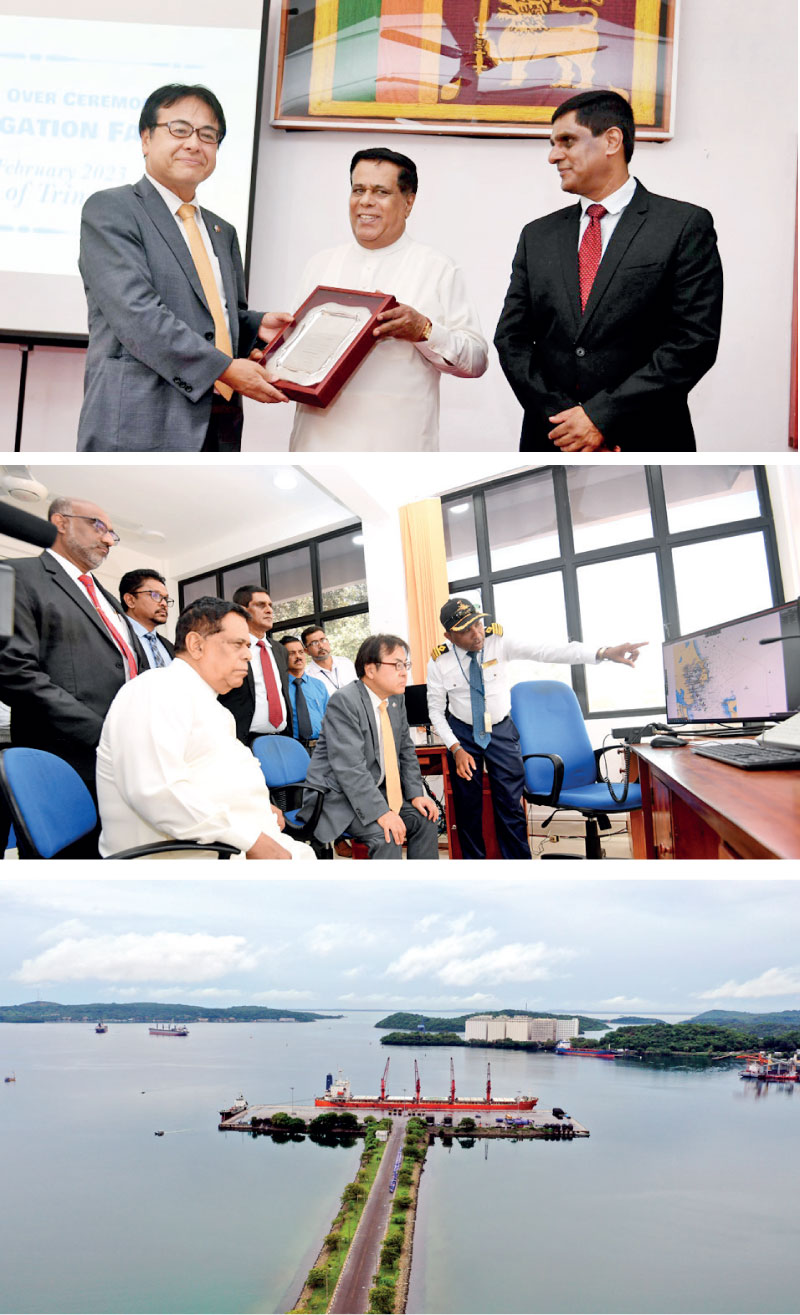Thursday Dec 12, 2024
Thursday Dec 12, 2024
Monday, 20 February 2023 02:05 - - {{hitsCtrl.values.hits}}

Trincomalee Harbour, a natural deep-water harbour, is considered the fifth largest natural harbour in the world. According to historical records, the Port of Trincomalee was known as “Gokanna” in ancient times. On 2 March, 1815, Sri Lanka surrendered to the British, and with the recognition of the Port of Trincomalee’s safe positioning, the British established a Royal Naval and Air Force base there. After independence in 1948, the Port of Trincomalee was nationalised in 1967 and later vested under the purview of Sri Lanka Ports Authority (SLPA) in 1979.
Despite its world-class recognition among industrial and tourist ports, the development and operations of the Port of Trincomalee were hampered due to the rapid development of the Port of Colombo and the lack of potential to perform night operations. Vessels calling at the port at night had to enter the port during the daytime of the following day, after anchoring at the out-harbour waters during the previous night, which caused interruptions to port operations and their efficiency.
As a result of fruitful discussions between the Government of Sri Lanka and the Government of Japan in 2017, the two governments entered into an agreement to implement a grant aid under the Japanese Non-Project Grant Aid Program 2017, also known as the Economic & Social Development Program. Accordingly, this grant aid of 1 billion Japanese Yen was provided for the Night Navigation Operations Project at the Port of Trincomalee, which included a state-of-the-art Vessel Traffic Management System, Radar Equipment, Lighthouse Equipment, 16 Navigation Buoys, 2 Mooring Buoys, 2 400KV Generators, 14 Fire Pumps with machinery, and a Pilot Vessel provided by the Japan International Cooperation System (JICS) with the invaluable assistance of the Government and the People of Japan.
The Trinco Night Navigation Operations Project, which includes all of this equipment and facilities, was handed over for operations on 17 February, 2023, at a function held at the Port of Trincomalee, with the initiative of Ports, Shipping, and Aviation Minister Nimal Siripala de Silva and Japanese Ambassador Mizukoshi Hideaki, and the participation of several higher officials of the Ministry of Ports, Shipping, and Aviation and Sri Lanka Ports Authority (SLPA). The SLPA expects the daily operational capacity at the Port of Trincomalee to increase with the commencement of Night Navigation Operations.
Currently, the Port of Trincomalee is being developed to facilitate cement, mineral sand, and fuel importation. The adjoining lands to the port will be utilised for port-related industries. The port, which was incurring losses until recently, has started generating outstanding profits during the past six months. Under the latest developmental plans, ample opportunities are available in Trincomalee for a large scope of port-related investments, such as tank farms and LNG storage facilities. The SLPA points out that lands in the port’s suburbs could be well-utilised for these purposes. The SLPA has already implemented programs to attract more local and foreign investors to the port.